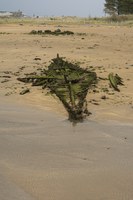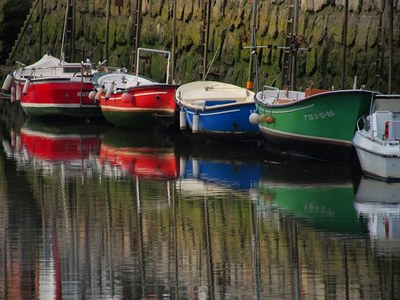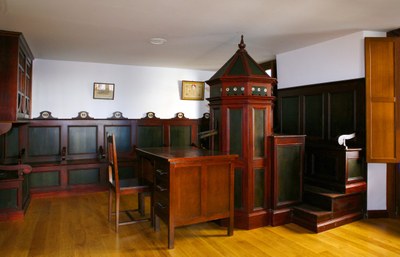Along the river Urola, with sea views
A history seasoned with salt
The salt from the Cantabrian Sea is closely linked to Zumaia’s history: just one look is enough to guess the town's relationship with the ocean. Indeed, Zumaia has a long maritime history. Perhaps its large port might surprise you at first, but since ancient times, Zumaia has made its living from fishing and trade, and many a sailor and shipyard worker have come from our town.
Zumaia was built around the Church of Saint Peter, which in the past served as a fort to protect the town from attacks from the sea. Like any good fort, it holds many secrets, for example, the altarpiece by Juan de Antxieta, which has been declared a National Monument. Additionally, if you visit Saint Peter’s church you can learn details about the Battle of Trafalgar.
Near the Tourist Information Office, in what is now Paseo de Gernika, an important commercial dock was created in the 20th century which included a train station. The raw materials that arrived via the dock supplied the biggest industries in the Urola valley.
In times of famine, collecting shellfish and seafood from the rocks of the coastline (the wave-cut platform of the Protected Biotope) was a vital lifeline. Because of this, Zumaia’s relationship with the octopus is very significant, even today.
Talaimendi is a very well-known area of Zumaia, and at the same time very important. As its name suggests (talai-mendi means look-out mountain in Basque), it was the place where fires were lit after whales had been spotted, or attacks coming from the sea.
And all of that history can be seen and discovered today. In fact, the patron saint of all sailors, Saint Elmo, has a chapel dedicated to him at the top of the cliff overlooking Itzurun beach: a lovely religious temple whose origins go back to the 16th century, and which contains an 18th century wooden Rococo altarpiece.
Also named after Sant Elmo is the old fisherman’s guild, where you can see the workings of the auction machine that was once used for selling fish, the only one still preserved in the whole of the Basque Country.
Here in Zumaia we have two beaches: Itzurun and Santiago. Itzurun, in the heart of the city, has been used as the exceptional set for many films and television series due to the Flysch, a rock formation that looks like a big open book, where you can see 60 billion years of the Earth’s history. The walk along Avenida Julio Beobide ends in two areas: the small rocky area of Inpernupe to the left, and Santiago beach to the right, a large sandy beach with a special ecosystem, hosting over 50 different plant species.

In Zumaia you can also find the "Kantauri Ondare Museoa" museum, which contains treasures related to ships and shipbuilding, where you can see curiosities such as 100-year-old compasses, anchors, rudders, and more. Indeed, the importance of industry in Zumaia led to a significant presence of ship engine manufacturers, so the museum, in turn, is a way of paying a small tribute to them.
If you want to learn all there is to know about this maritime legacy and the imprint made by the fishermen, come to Zumaia and taste the salt that the first sailors of Zumaia tasted.

 turismoa@zumaia.eus
turismoa@zumaia.eus
 Bulegoa
Bulegoa










